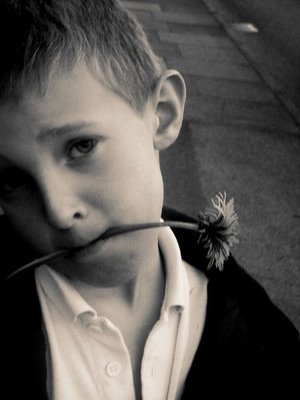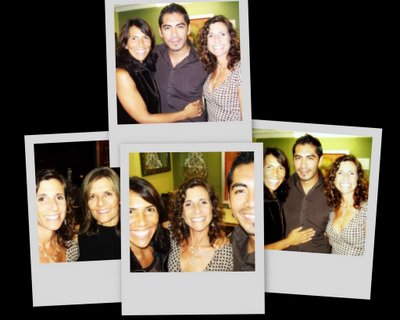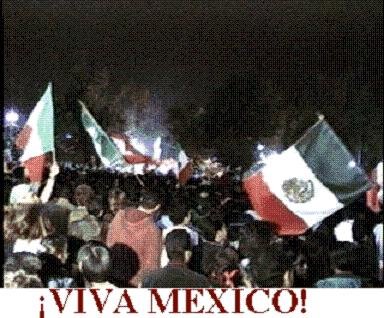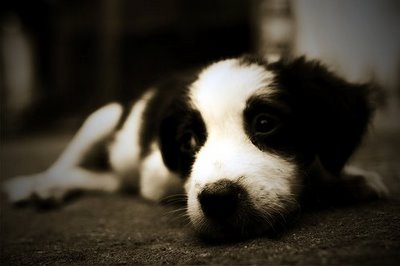El perdon...
 “Perdonar es un trabajo necesario y propio para cada hombre;para las ocasiones en las que no sea justo, caritativo o sabio,otro hombre podrá hacerlo por mí,sin embargo para perdonar a mí enemigo,ningún otro hombre podrá hacerlo más que yo mismo.”-George Herbert
“Perdonar es un trabajo necesario y propio para cada hombre;para las ocasiones en las que no sea justo, caritativo o sabio,otro hombre podrá hacerlo por mí,sin embargo para perdonar a mí enemigo,ningún otro hombre podrá hacerlo más que yo mismo.”-George Herbert El amor es una elección, la ira es una elección, como también el perdón. ¿Cómo puede ser que dichas emociones sean cuestión de decisión? Es muy sencillo, se eligen por que los seres humanos tenemos el poder de decidir sobre nuestras emociones, pues la decisión se ve influenciada por los pensamientos que producimos, nuestro compromisos y nuestras acciones. De otra manera seríamos víctimas del destino, de eventos y situaciones fuera de nuestro control.Nosotros no somos víctimas pasivas del destino, sin embargo como actores de la vida, le damos forma a nuestro destino.
En realidad no es cuestión de lo que nos ha pasado o bien de la manera en cómo hemos respondido a estas acciones, es a través de nuestra habilidad de elegir, que ejercitamos este control. Nosotros decidimos el valor real de las cosas y el efecto de las acciones o reacciones que presentemos ante ello.Jessica Lynch, una prisionera en la guerra en Irak, eligió el perdón cuando descubrió que la única cosa que sus verdugos no le podían robar era su habilidad para elegir la manera de responder ante la depravación y la falta de humanidad en torno a ella. Nadie puedo colocar cadenas alrededor de su actitud. Es entonces cuando nuestra habilidad de elegir nuestras reacciones aún en las más adversas circunstancias, es lo que libera y ennoblece nuestra calidad humana.
En la obra Los Miserables de Victor Hugo, Jean Valjean se transforma por un sacerdote que le perdona sus actos de traición y engaño, de ser en parte una victima de la injusticia al convertirse en un ser humano que ama, que comparte y perdona. Al ser perdonado por una persona facultada para cuestionar la justicia, coloca a Jean Valjean en un estado moral de correspondencia y responsabilidad hacia todos aquellos compañeros de vida que tuvieron una conducta similar a la suya. El acto de profundo amor y perdón representado del sacerdote lo lleva a multiplicar este acto de amor del perdón por añadidura.
En realidad no es cuestión de lo que nos ha pasado o bien de la manera en cómo hemos respondido a estas acciones, es a través de nuestra habilidad de elegir, que ejercitamos este control. Nosotros decidimos el valor real de las cosas y el efecto de las acciones o reacciones que presentemos ante ello.Jessica Lynch, una prisionera en la guerra en Irak, eligió el perdón cuando descubrió que la única cosa que sus verdugos no le podían robar era su habilidad para elegir la manera de responder ante la depravación y la falta de humanidad en torno a ella. Nadie puedo colocar cadenas alrededor de su actitud. Es entonces cuando nuestra habilidad de elegir nuestras reacciones aún en las más adversas circunstancias, es lo que libera y ennoblece nuestra calidad humana.
En la obra Los Miserables de Victor Hugo, Jean Valjean se transforma por un sacerdote que le perdona sus actos de traición y engaño, de ser en parte una victima de la injusticia al convertirse en un ser humano que ama, que comparte y perdona. Al ser perdonado por una persona facultada para cuestionar la justicia, coloca a Jean Valjean en un estado moral de correspondencia y responsabilidad hacia todos aquellos compañeros de vida que tuvieron una conducta similar a la suya. El acto de profundo amor y perdón representado del sacerdote lo lleva a multiplicar este acto de amor del perdón por añadidura.
“Aquel que no puede perdonar a otros, rompe el puente que deberá cruzar si busca alcanzar el cielo; Para todos aquellos que han tenido la necesidad de ser perdonados.”-George Herbert
La habilidad de perdonar es de considerable ayuda para que aquellos que han provocado un daño u ofensa, para que sean capaces de reconocerlo, sientan el remordimiento y el deseo de disculparse y no volver a cometer la ofensa. En la mayoría de los casos la persona que ha ofendido es capaz de pedir una disculpa.
“Es más sencillo para el generoso perdonar, que para el que ofende pedir ser perdonado”-E. Thompson
Disculparse es importante. Para alguien herido, no hay otra retribución posible. El daño es irrevocable. Lo único que podrá proporcionar un alivio será un acto de verdadera conciencia, responsabilidad y remordimiento.
En la práctica terapéutica, se ha encontrado que el pasado que duele, sigue siendo parte del presente porque nunca hubo una disculpa adecuada. Una disculpa sincera le quita un peso de encima al ofensor y deja el asunto en manos del ofendido. Un par de humildes palabras será lo necesario para ayudar a la víctima a dejar ir parte de su dolor.
“Nunca el alma del ser humano parece ser más fuerte y noble que cuando olvida la sed de venganza y desafía al perdón sobre la injusticia.”-E.H. Chapin
¿Pero, qué sucede cuando una disculpa no se ve próxima? El camino hacia el perdón es duro pero deberá de recorrerse. Recordar el daño solo significará un sufrimiento innecesario. Debemos perdonar de cualquier manera y por nuestro propio bien. La justicia se debe dejar en manos de Dios o de la fuerza espiritual en la que tu creas, mientras nosotros liberamos a nuestro ser del dolor y de la larga espera de que el perdón por parte de nuestro ofensor ocurra.
Es más fácil perdonar que confiar. De manera unilateral e incondicional, el ser humano puede perdonar. Confiar depende de las acciones del otro. El perdón se otorga, la confianza se gana. En la Biblia por ejemplo, se nos pide amar y perdonar a nuestros enemigos, no confiar en ellos. Perdonar significa dejar ir al dolor y a la rabia que nos lastima. No significa exponernos en el futuro a mas dolor, porque esto también se puede elegir.
Reconstruir una relación a su máximo potencial está comprometida con realizar los cambios necesarios y enfrentar los verdaderos retos. Esto abrirá el corazón de nuevo a los riesgos. Los cambios deberán ser reales y sustanciales. Las ofensas no podrán volver a suceder y se abrirá paso para que la confianza florezca nuevamente.
El mantener la confianza no significará que no se haya perdonado una acción determinada. Significa que aun no estás listo para confiar de nuevo. Para el ofensor el precio será restaurar la confianza. Una demostración consistente de que el cambio en realidad se está dando, propiciará la confianza a la larga.
Una historia de pasos en falso, equivocaciones, promesas rotas y de ofensas repetidas, hace más difícil alcanzar la confianza. El ofensor necesita ser paciente y comprensivo ante el hecho de que las buenas intenciones no son suficientes. Restaurar la confianza toma tiempo y paciencia.
¿Tu con que frecuencia perdonas?; ¿Tantas como sea necesario?; ¿Cuánto tiempo te toma volver a confiar en esa persona que te ofendió también como sea necesario?






